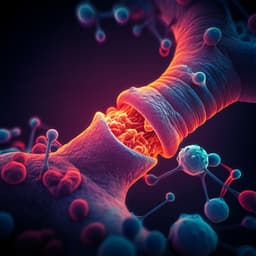
Medicine and Health
Non-human primate model of long-COVID identifies immune associates of hyperglycemia
C. S. Palmer, C. Perdios, et al.
This groundbreaking study presents a non-human primate model exploring the metabolic sequelae of SARS-CoV-2, revealing how infected African green monkeys exhibit persistent hyperglycemia linked to an abnormal blood chemokine signature. Remarkably, an mRNA vaccine administered post-infection showcased a positive glycemic effect. Conducted by a team of expert researchers, this work offers crucial insights relevant to human health.
Playback language: English
Related Publications
Explore these studies to deepen your understanding of the subject.







